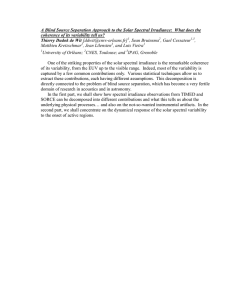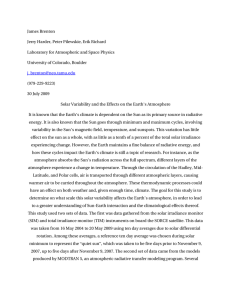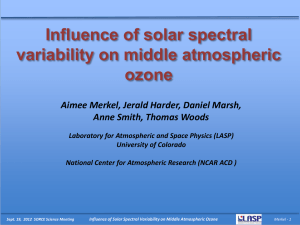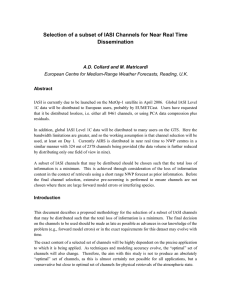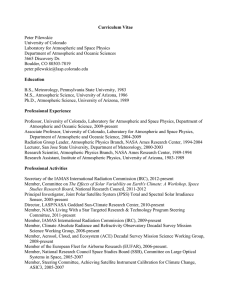Influence of Solar Spectral Variability on Middle Atmospheric Ozone Anne K.
advertisement
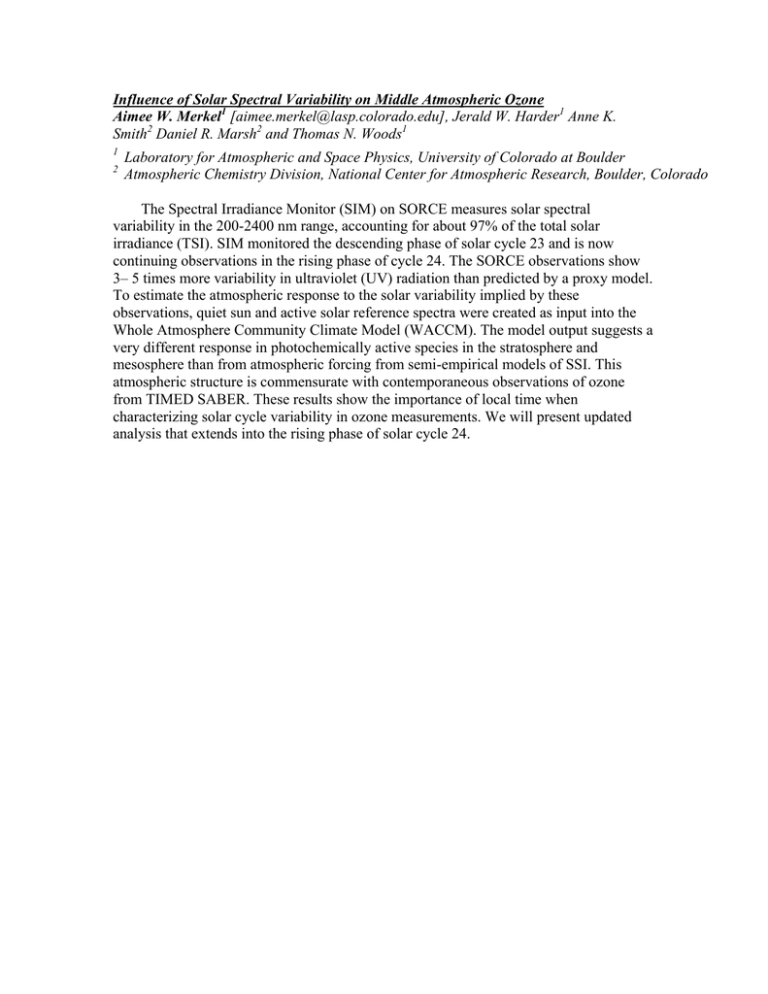
Influence of Solar Spectral Variability on Middle Atmospheric Ozone Aimee W. Merkel1 [aimee.merkel@lasp.colorado.edu], Jerald W. Harder1 Anne K. Smith2 Daniel R. Marsh2 and Thomas N. Woods1 1 2 Laboratory for Atmospheric and Space Physics, University of Colorado at Boulder Atmospheric Chemistry Division, National Center for Atmospheric Research, Boulder, Colorado The Spectral Irradiance Monitor (SIM) on SORCE measures solar spectral variability in the 200-2400 nm range, accounting for about 97% of the total solar irradiance (TSI). SIM monitored the descending phase of solar cycle 23 and is now continuing observations in the rising phase of cycle 24. The SORCE observations show 3– 5 times more variability in ultraviolet (UV) radiation than predicted by a proxy model. To estimate the atmospheric response to the solar variability implied by these observations, quiet sun and active solar reference spectra were created as input into the Whole Atmosphere Community Climate Model (WACCM). The model output suggests a very different response in photochemically active species in the stratosphere and mesosphere than from atmospheric forcing from semi-empirical models of SSI. This atmospheric structure is commensurate with contemporaneous observations of ozone from TIMED SABER. These results show the importance of local time when characterizing solar cycle variability in ozone measurements. We will present updated analysis that extends into the rising phase of solar cycle 24.
![The Impact of Solar Spectral Irradiance Variability on Middle Atmospheric... Jerald Harder [], Aimee Merkel , Dan Marsh](http://s2.studylib.net/store/data/013089428_1-069dae374fd6d45b67749c07e0b79de0-300x300.png)
